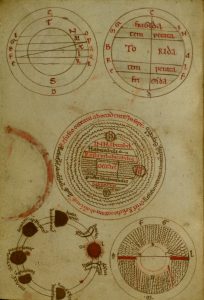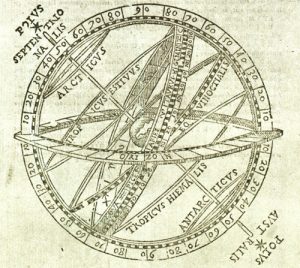Podcast episode
March 7, 2018
Episode 27: Plato’s Timæus


This episode introduces Plato’s Timæus, a dialogue which has shaped the very bones of western intellectual culture. We discuss the place of the dialogue in Plato’s oeuvre, its reception history, and the most important ideas put forward in the dialogue vis à vis the history of western esotericism. These ideas are among the most powerful and enduring tropes of western esoteric (and non-esoteric) thought, and include:
- the first narrative of a true ‘creator god’,
- the first account of a creation in which time itself has a beginning,
- the first known attempt to put mathematics at the basis of reality,
- the first attempt at a mathematical astronomy AND simultaneously the first Greek account of the stars as stellar gods, and
- the first formulation of the human being as a microcosm of the cosmic macrocosm.

Other points covered include:
- The problem of ordering Plato’s dialogues, with a brief rundown of the general scholarly picture of early, middle, and late dialogues,
- The unique position of the Timæus as the only Platonic dialogue (partly) available in the Latin-speaking world throughout the middle ages,
- A quick introduction to the Platonic ‘theory of forms’.
Works Discussed in this Episode:
Plato, translated by H.D.P. Lee, 1965. Timæus and Critias. Penguin, Harmondsworth.
Recommended Reading (and Listening):
Peter Adamson’s History of Philosophy Podcast has some great material on the philosophic-speculative side of the Timæus. In the context of this dialogue, the episode on Plato’s understanding of myth is also very interesting.
- Cornford, F. M., 2014. Plato’s Cosmology: the Timaeus of Plato. Routledge, London.
- Mohr, R. D. & Sattler, B. M. (Ed.), 2010. One Book, the Whole Universe: Plato’s Timæus Today. Parmenides Press, Las Vegas/Zurich/Athens.
- Reydams-Schils, G., 1999. Demiurge and Providence: Stoic and Platonist Readings of Plato’s Timæus. Turnhout.
- Reydams-Schils, G., 2003. Plato’s Timaeus as Cultural Icon. University of Notre Dame Press, .
- Runia, D. T., 1986. Philo of Alexandria and the Timæus of Plato. Brill, Leiden.
- Sorabji, R., 1983. Time, Creation, and the Continuum: Theories in Antiquity and the Early Middle Ages. Duckworth, London.
On the relative dating of the dialogues, see
- Kahn, C. H. (2002). ‘On Platonic Chronology’. In: Annas, J. & Rowe, C. J. (Ed.), New Perspectives on Plato, Modern and Ancient, Harvard University Press, Cambridge, MA.
Themes
Astrology, Astronomy, Catastrophism, Cyclical Time, Geometry, Overview, Philosophy, Plato


James Lomas
November 24, 2019
To a Pythagorean, it isn’t that there is One God– it is that Oneness is Godliness
Alexander Polyhistor:
“The beginning of all is unity (monas); unity is a cause of indefinite duality as a matter; both unity and indefinite duality are sources of the numbers; the points are proceeding from numbers; the lines – from the points; from the lines are plane figures; from plane are volumetric figures; from them – sensibly acceptable solids, in which four elements are – fire, water, earth, and air; moving and changing totally, they give rise to the universe – inspired, intelligent, spherical, in the middle of which is the earth; and the earth is also spherical and inhabited from all sides. [DL, VIII, 25]”
The universe starts as singularity, a oneness, a unity, a monad — the entire universe, smaller than an atom. (As we know from modern physics!)
But once the oneness came into being, its existence defined the space around it; empty, indefinite possibility. That empty possibility space–the “noneness”–together with the oneness, are the cause of the duality — the twoness.
When the duality interacts (e.g., the big bang cooling by flowing out into space), as the one flows into the nothing, the interaction of something into nothing is the source of all. As the daoists say, from the one to the two to the three to the ten thousand.
The threeness, the interaction, is the combination of the oneness and the twoness; for in the two, one is born, and together, that is the three. And from the interactions, come all other numbers.
This is the logos of the universe. Dao, btw, translates to logos.
Finally,
Earth – solid
Water – liquid
Air – gas
Fire – plasma
Ha! He got it!
Shane Hoffmeyer
March 11, 2020
very much enjoyed your comment
Shane Hoffmeyer
March 11, 2020
Maybe Plato made up separate identities from fear of retaliation from teachers of the mysteries in the east…
Clark E Aitkins
October 6, 2020
It would be interesting to compare and contrast Plato’s notion of the human microcosmic head to the Headless One of Greek magical papyrus/Holy Guardian Angel fame. Especially considering how Crowley broke the ritual into sections corresponding to the elements.
Natan Melzer
December 2, 2025
On some level [and not necessarily on every level], presumably the answer to the question “who is it who cannot speak directly for themselves in a Platonic dialogue” has to be ‘Plato’, right? On the most ‘dogmatic’ of Plato’s dialogue, setting out Plato’s absence on the outset would make sense. Presumably, he has other people and other purposes also in mind, but emphasizing his own absence has to be up there. Hell, we even get told in the Phaedo that Plato was too sick to attend on that day as well, so we have precedent. Proclus apparently dismissed this suggestion as temporally implausible and having nothing to do with the dialogue. I agree as to the first, hence why he can’t even be named, and as for the second emphasizing the absence of the dialogue’s own author and that his viewpoint is a missing one distinct from that of the dialoguers is a pretty blatantly distinct lens which reshapes the dialogue.
Earl Fontainelle
December 2, 2025
Agreed.